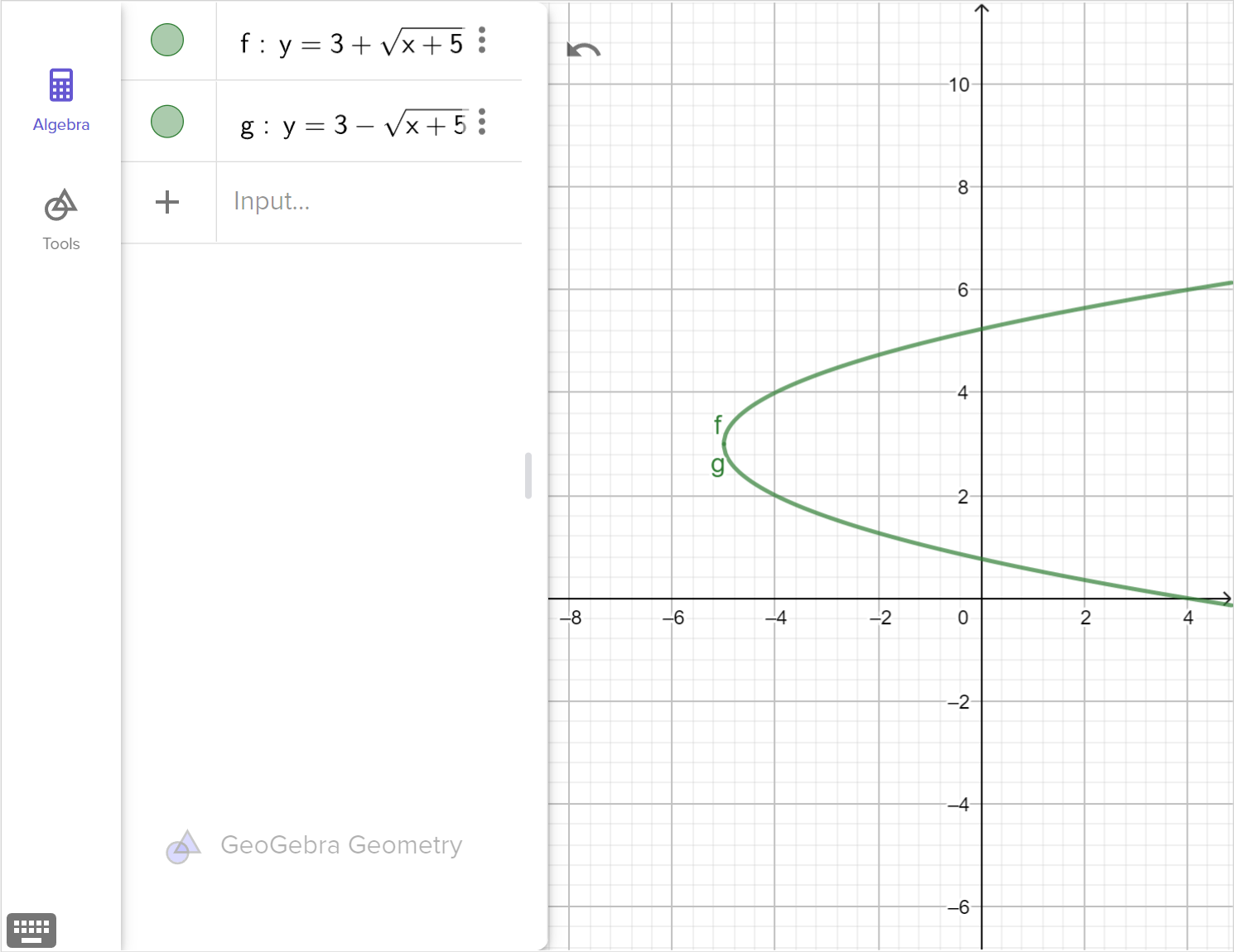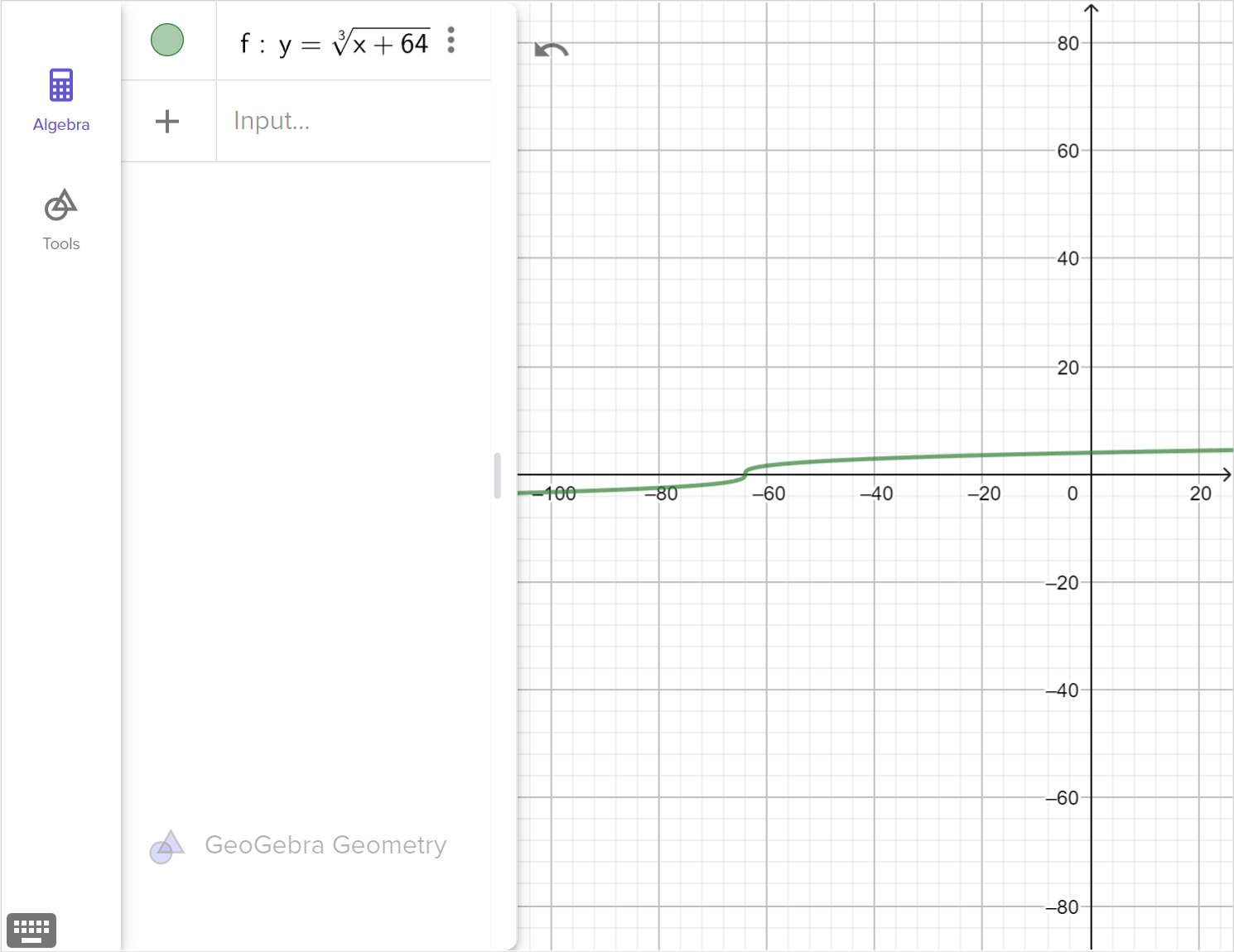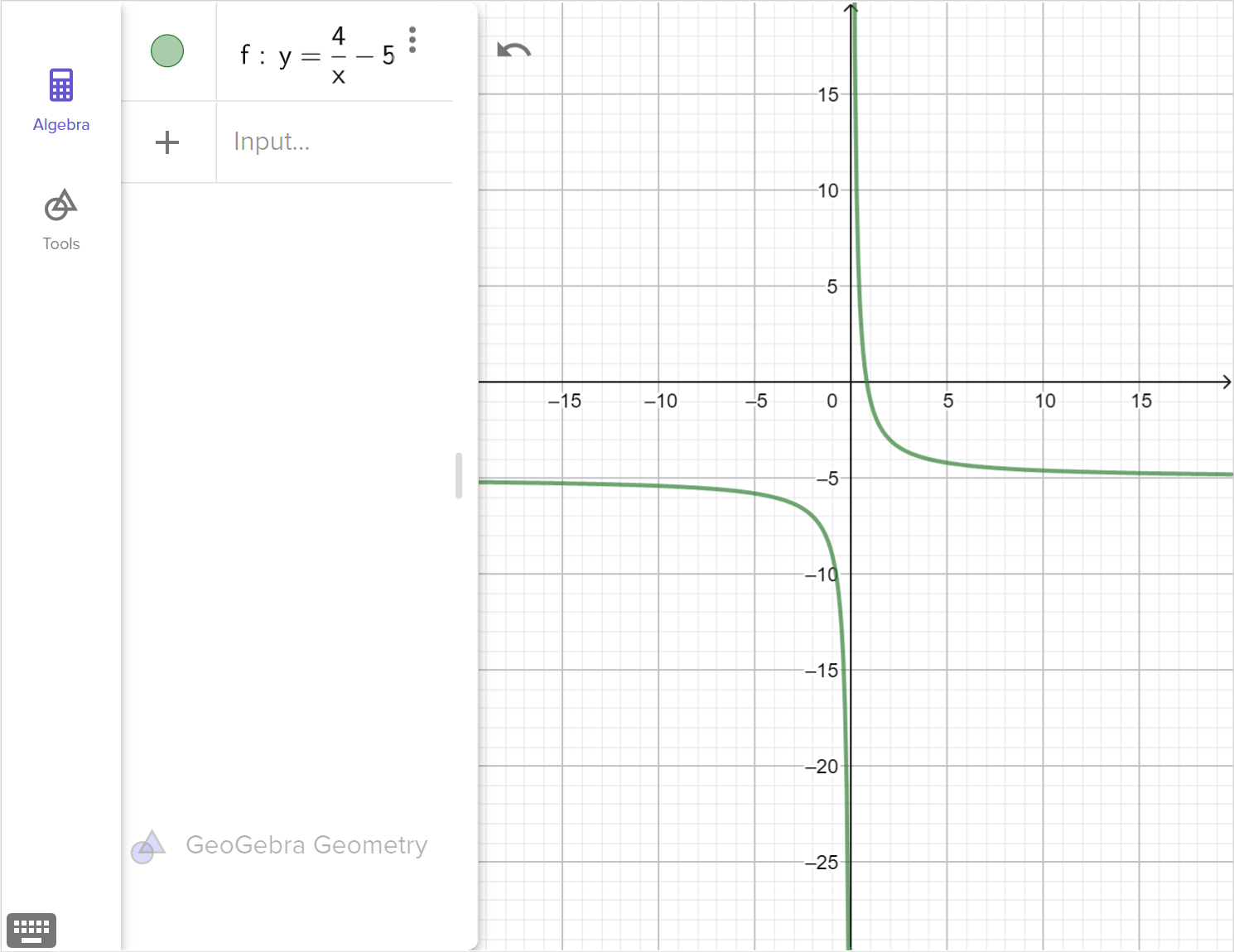7.01 Inverse functions
Introduction
We sketched the inverse graphs of linear functions and algebraically found inverses in Algebra 1 lesson 3.07 Inverses of linear functions . This lesson applies the same concepts to radical, rational, and polynomial functions. In some cases, we will need to restrict the domain in order to create inverse functions.
Inverse relations
Inverse operations are operations that 'undo' each other - for example, addition and subtraction, or multiplication and division. We can extend this concept to find the inverse of an entire function.
Inverses are useful for determining the input of a relation if the outputs are known. Consider a situation where a plane is traveling at a constant speed, and we want to know how long the plane has been flying over certain distances. Rather than using the function d\left(t\right)=rt and dividing by the rate to find the time for each of the distances, we can simply rewrite the equation as t=\dfrac{d}{r}. This is the inverse relation of d\left(t\right).
We can find the algebraic equation for the inverse relation by completing the following steps:
Write f\left(x\right) as y
Swap x and y
Solve for y
Swapping the x and y variables in a relationship will exchange the coordinates for any point on the graph. Thus, the domain and range will be switched in an inverse relation compared to the original relation.
Geometrically, this means that the relation and its inverse are mirror images of each other across the line y=x.
Examples
Example 1
The volume of a sphere is modeled by the equation V\left(r\right)=\dfrac{4}{3}\pi r^3.
For each of the following volumes, find the radius of the corresponding sphere.
- 288\pi
- \frac{243\pi}{2}
- \frac{4000}{81}\pi
Describe a more efficient way to find the radius when the volume is known.
Explain how your answer to part (b) relates to the equation for volume.
Example 2
Complete the tables. State which relations are inverses.
| x | -2 | -1 | 0 | 1 | 2 |
|---|---|---|---|---|---|
| f\left(x\right)=2x^3 |
| x | -2 | -1 | 0 | 1 | 2 |
|---|---|---|---|---|---|
| g\left(x\right)=\frac{1}{2}x^3 |
| x | -16 | -2 | 0 | 2 | 16 |
|---|---|---|---|---|---|
| h\left(x\right)=\sqrt[3]{\frac{x}{2}} |
| x | -1 | -\frac{1}{8} | 0 | \frac{1}{8} | 1 |
|---|---|---|---|---|---|
| j\left(x\right)=2\sqrt[3]{x} |
Example 3
Consider the absolute value function y=\left|x+3\right|+6.
State the domain and range of the inverse relation.
We can verify a relation's inverse by graphing the relations to show the two relations are reflected across the line y=x.
We can find the inverse by:
- Algebraically swapping x and y and solving the equation for y
- Graphically swapping the x and y coordinates
Inverse functions
Exploration
Explore the applet by choosing a function and dragging the slider to produce the function's inverse.
- The inverse of a linear function is also always a function. What do you notice about the inverse of each of these parent functions?
- How does restricting the domain make a relation become a function?
Any function can be reflected across the line y=x to create an inverse relation, but not all inverse relations will satisfy the definition of a function.
All inverse functions are inverse relations, much like all functions are relations, but not all inverse relations are inverse functions.
Functions whose inverse is also a function are called one-to-one functions and have special properties.
Note that in order to be a function, a relation maps each input to exactly one output. A one-to-one function includes the additional criteria that the function must map each output to exactly one input.
For example, let's consider f \left(x \right)=x^2. The inverse relation is x=y^2 or y=\pm \sqrt{x}. For any input value, x \geq 0, there will be two output values: one positive and one negative. Therefore, this inverse relation is not a function.
We do not have to actually reflect a function across y=x in order to graphically determine whether or not a function's inverse is a function. Instead, we can visually check whether or not a function is one-to-one by using a horizontal line test.
If a horizontal line can be drawn through all range values of the original function without intersecting the graph at more than one point, then each output value will only map to one input value, and the function is a one-to-one function and its inverse will also be a function.
If we restrict the domain of y=x^2 to x\geq0, it will now pass the horizontal line test and have an inverse function, namely y=\sqrt{x}.
Examples
Example 4
Consider the graphs of f\left(x\right), g\left(x\right) and h\left(x\right) and determine if they have an inverse function without any domain restrictions. Explain how you know.
f\left(x\right)
g\left(x\right)
h\left(x\right)
Example 5
For each of the following functions:
- Determine an expression for the inverse relation.
- State whether or not the inverse is a function.
- If the inverse is not a function, find a restricted domain for the function under which the inverse is a function.
y = \left(x-3\right)^2-5
y=\left(x- 4 \right) \left(x^2 +4x + 16 \right)
f \left(x \right) = \dfrac{4}{x+5}
Example 6
Consider the function shown in the table below.
| x | 1 | 2 | 3 | 4 | 5 | 6 |
|---|---|---|---|---|---|---|
| f\left(x\right) | 32 | 16 | 8 | 4 | 2 | 1 |
Determine if it is possible for an inverse function to exist without restricting the domain.
Determine the value of f^{-1}\left(8\right).
Determine the value of x that makes f^{-1}\left(x\right)=1.
We can determine if a function's inverse is also a function by using the horizontal line test on the function. If the inverse is not a function, we can restrict the domain of the given function.



